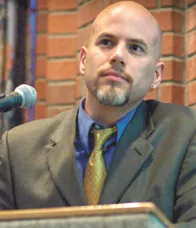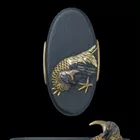In 1965, the Sierra Club sued to stop a ski development in California's Sequoia National Forest, arguing that Walt Disney Enterprises' proposed resort would constitute an injury to Mineral King Valley. In 1972, the Supreme Court rejected the club's reasoning, unwilling to accept that natural objects had standing to sue in court. Instead, the court urged the Sierra Club to amend its complaint to show how the club's members, rather than the valley, would be injured. The club did so, and the ski resort was stopped.
However, one justice, William O. Douglas, was persuaded by the Sierra Club's original reasoning. His passionate dissent in Sierra Club v. Morton marks a pivotal point in environmental legal battles, one that still shapes advocacy today.
Douglas' views were inspired by his own experiences in the wild. He grew up in Yakima, Washington, hiking the foothills and peaks of the Cascade Range, and sang the praises of nature throughout his life. "When one stands on Darling Mountain, he is not remote and apart from the wilderness; he is an intimate part of it," he wrote in a typical passage from his memoir, Of Men and Mountains.
An intellectually restless man who wrote and traveled extensively, Douglas published five environmental books between 1960 and 1967. One of them, A Wilderness Bill of Rights, argued for a "Bill of Rights to protect those whose spiritual values extend to the rivers and lakes, the valleys and the ridges, and who find life in a mechanized society worth living only because those splendid resources are not despoiled."
In his dissent in the Sierra Club lawsuit, Douglas advocated for a federal rule that would allow for litigation "in the name of the inanimate object about to be despoiled, defaced, or invaded by roads and bulldozers and where injury is the subject of public outrage."
Douglas recommended accepting nature's rights as a lasting way to shield wild places and processes from the ever-accelerating threats they faced. His passionate plea didn't persuade his practical-minded judicial brethren, even if fellow dissenter Justice Harry Blackmun called it "eloquent." Yet Douglas' opinion influenced and inspired environmentalists at the time and has ever since. Roderick Nash, in his history of environmental ethics, The Rights of Nature, said that Douglas had "located the conceptual door to the rights of nature."
In the years since, environmental groups have been able to sue on behalf of nature by demonstrating group members' legitimate interest in conservation issues or in places like Mineral King, a concept called associational standing. But despite Douglas' efforts, nature still finds itself marginalized in courtrooms.
The courts themselves have never fully embraced the idea of nature's standing, but they've come close. This has been particularly true for endangered species like the marbled murrelet, the northern spotted owl and the coho salmon — all of which found themselves in court cases as co-plaintiffs alongside humans. Nature has yet to stand alone in court, however.
The debate about nature's standing becomes a broader philosophical debate about law and what it can and can't, or should or shouldn't, do. Law is not intended to transform levels of consciousness or morality; it is a pragmatic discipline. As a practical matter, extending standing to natural objects may simply be unnecessary. As a moral matter, however, the failure to acknowledge nature's rights frustrates legal and environmental activists and surely would have disappointed (though not surprised) Douglas.
Today, global climate change, biodiversity losses and habitat fragmentation are creating unprecedented social and ecological problems. Environmental crises require serious changes in governance and legal systems, and arguably in morality. When organizations such as the Earth Law Center work to "advance legal rights for ecosystems to exist, thrive and evolve," or when Ecuador declares in its 2008 Constitution that nature "has the right to integral respect for its existence and for the maintenance and regeneration of its life cycles, structure, functions and evolutionary processes," they are paying homage to Douglas.
Toward the end of his dissent, Douglas noted that well-meaning advocates often flock to the environmental issue du jour, an understandable tendency but one that cannot sustain environmental protection over the long run. "That is why these environmental issues should be tendered by the inanimate object itself," he wrote. "Then there will be assurances that all of the forms of life which it represents will stand before the court — the pileated woodpecker as well as the coyote and bear, the lemmings as well as the trout in the streams. Those inarticulate members of the ecological group cannot speak. But those people who have so frequented the place as to know its values and wonders will be able to speak for the entire ecological community."
Douglas' day may still come. In the meantime, though, we humans, or at least our organizations, will have to serve as acceptable stand-ins. ♦
Adam Sowards is an environmental historian at the University of Idaho. He is the author of The Environmental Justice: William O. Douglas and American Conservation. A version of this column was first published by High Country News (hcn.org).
















